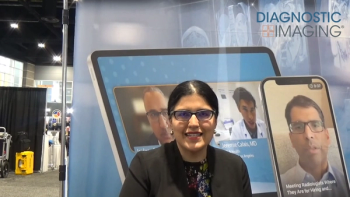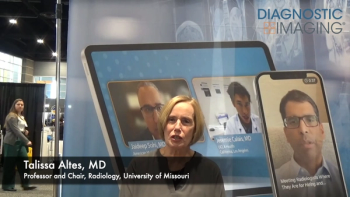
How to Minimize the Impact of Patient No-Shows
Missed appointments can have serious consequences for patient outcomes-and for your bottom line. Here are some strategies for reducing the number of no-shows.
No one likes a “no-show.” We all know the frustration when we expect someone to arrive and they don’t. The waiting. The time lost. The wondering. In healthcare, patient no-shows, or missed medical appointments with no prior notice, are prevalent-and costly.
The size of the problem in radiology is particularly burdensome with rates ranging from 4-40%, and an estimated $300 to $400K of uncaptured revenue per year in certain modalities. While these statistics may not be surprising, they are problematic.
Recognizing the impact of patient no-shows
The three main impacts of patient no-shows in radiology are uncaptured revenue, underutilized staff and resources, and delayed patient care. The high rate of patient no-shows is a big concern in imaging due to cost and efficiency-imaging exams are expensive compared to other medical appointments and require highly-skilled staff to perform them.
Related article:
The lost revenue opportunity and workflow, and equipment utilization for radiology departments is also significant. Beyond the more obvious financial impacts, patient no-shows have clinical ramifications as well. Imaging exams are usually ordered when a patient’s condition has reached a more serious stage or doctors need to identify more clearly the root cause of concern. When patients don’t show up, it delays a definitive diagnosis and possible treatment, which affects patient care.
Understanding why patients no-show
Unfortunately, most hospitals or imaging centers don’t usually have a good answer as to why patients don’t show up for appointments. Possible explanations range from patient anxiety about the exam or diagnosis; to employment, marital, or insurance status; to the number of past visits and familiarity with the hospital.
Other uncontrollable variables that attribute to patient non-compliance include things as simple as busy schedules, forgetfulness, driving distance, or the weather on the day of the exam. There are so many variables, many of which can be unique to a particular hospital’s demographic area or particular situation, that it’s difficult to pinpoint.
There are some ways to better understand patient no-shows. Using
Learning from patient no-show research
To better understand the patient-no show issue, Philips worked with the
- Patient-relatedfactors – including age, gender, city of home address, and estimated income
- Exam-relatedfactors – such as exam type, duration, department, subspecialty, site of exam, and whether or not the exam requires sedation
- Scheduling-related factors – depending upon lead time, day of week, hour of day, and whether the exam was manually scheduled or not.
One of the most significant correlations for imaging patient no-shows can be attributed to appointment scheduling lead time. If an appointment is scheduled for less than two weeks away, patients are more likely to show up. However, if an appointment has a long lead time, patients are less likely to show up.
For UWMC, based on just a few common imaging exams (breast US, brain MRI, abdomen US, MG screening) the estimated uncaptured revenue from patient no-shows
Identifying ways to reduce patient no-shows
To accurately reduce the impact of patient no-shows, healthcare providers must first focus on getting operational intelligence about the issue by investigating what the extent and implication of the problem is in their particular hospital or imaging center. What works for one hospital doesn’t always help at another-especially if patient populations differ. However, there are a few general areas that radiology departments can focus on immediately to increase patient compliance.
Scheduling systems can make the process more automated and assign appointments to patients based on risk level-meaning patients with a high risk of not showing up can be scheduled later in the day when a no-show would have less impact on workflow and other patients. Reminder systems can also increase compliance, but the means of communication must be tailored to specific patient lifestyle to be effective.
Related article:
Improving the overall patient experience in imaging goes a long way too. This includes keeping patients informed, communicating in advance about the procedure, and helping them prepare mentally and physically for the process.
Utilizing data analytics, AI to predict no-show rates
Most importantly, hospitals or imaging centers need to realize that individually, these variables or predictors are not enough to effectively predict patient no-show rates-but collectively they can be very informative. This is where data analytics tools, predictive modeling, and
For instance, to predict no-shows and cancellations, providers must first accurately capture all the potential factors that might affect no-shows. With the right data captured and artificial intelligence applied, we can close the gap by aggregating large volumes of retrospective data, demographic data, and census data. We can then construct quantitative models to predict no-show occurrence and highlight features that are informative in the prediction.
Minimizing patient no-shows in your own institution
If we look at the issue of patient no-shows from a strategic value-based care perspective, it is easy to see the ripple effect it can create for imaging departments. When patients don’t show up for appointments, it takes away an opportunity for another patient to have an exam done that day, and it puts the patient who doesn’t show up back in the queue, thereby extending the waitlist for other patients and delaying care.
Related article:
No-show prediction in radiology has the capability-through scheduling interventions and strategic patient engagement-to recapture revenue that would otherwise be lost to empty appointment slots. Awareness of the issue is the first step, identifying root cause is the next. When healthcare providers can readily see the actual data on the impact of missed appointments, as well as understand the unique patient-population or modality-specific trends within their own institution, they are in a better position to act with imaging data analytic strategies that provide tangible returns.
Sham Sokka is head of radiology solutions and Christopher S. Hall, PhD is the senior director of advanced concept development, radiology solutions at
Newsletter
Stay at the forefront of radiology with the Diagnostic Imaging newsletter, delivering the latest news, clinical insights, and imaging advancements for today’s radiologists.




























